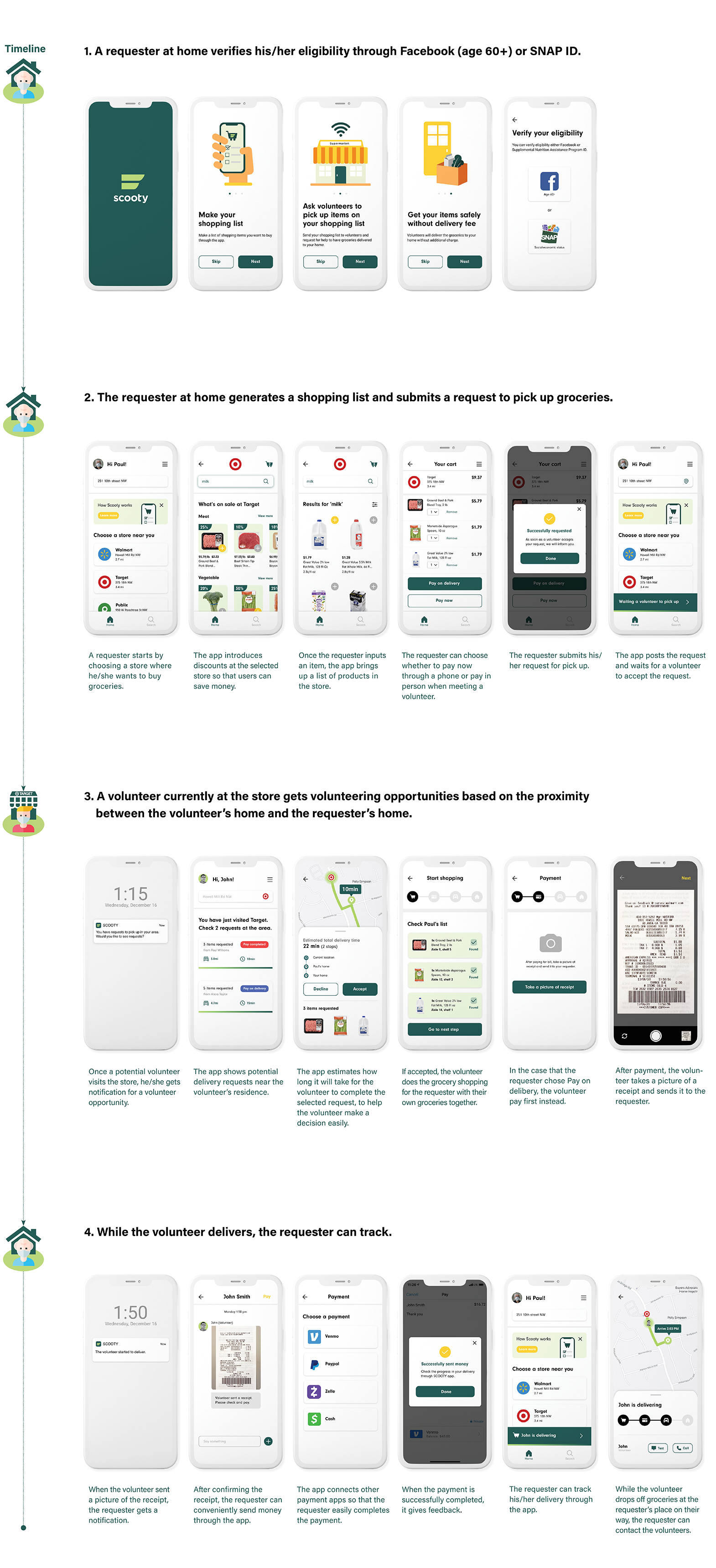Empowering Vulnerable Populations in Food Deserts: Scooty
Scooty is a micro-volunteering app designed to assist vulnerable populations in food deserts by connecting them with volunteers who can deliver groceries and essential items. The app facilitates quick and efficient matches between those in need and nearby volunteers, aiming to alleviate the challenges faced by individuals with limited access to nutritious food. By leveraging community support, Scooty strives to improve food security and promote well-being in underserved areas.
Identifying the Problem
The ongoing impact of the COVID-19 pandemic has significantly exacerbated food insecurity, making it even harder for vulnerable populations to access essential groceries. How might we improve food access for these communities during the pandemic?
Developing the Solution
Scooty connects individuals in food deserts with nearby volunteers currently at grocery stores, leveraging location tracking and social networking. By calculating the proximity between the volunteer's home and the requester's location, Scooty offers volunteers micro-volunteering opportunities to assist those in need.
1. Insights & Analysis
Research Methods
Primary Research: To gain a deeper understanding of the challenges users face in accessing food during the COVID-19 pandemic, we conducted an online survey and interviews. The research involved 31 participants, including low-income families (earning $25,000 - $49,999 annually) and older adults (55+ years old).
Secondary Research: Approximately 11.5 million low-income Americans, representing 4.1% of the population, live in “food deserts”—areas where access to supermarkets is limited to more than a mile in urban settings or over 10 miles in rural regions. These communities frequently struggle with food insecurity, a challenge that has been further intensified by the COVID-19 pandemic. Our research shows that, beyond those living in food deserts, the elderly, individuals with disabilities, and low-income families are also experiencing significant challenges in accessing food during the pandemic. As a result, we have identified these groups as our primary focus for support.
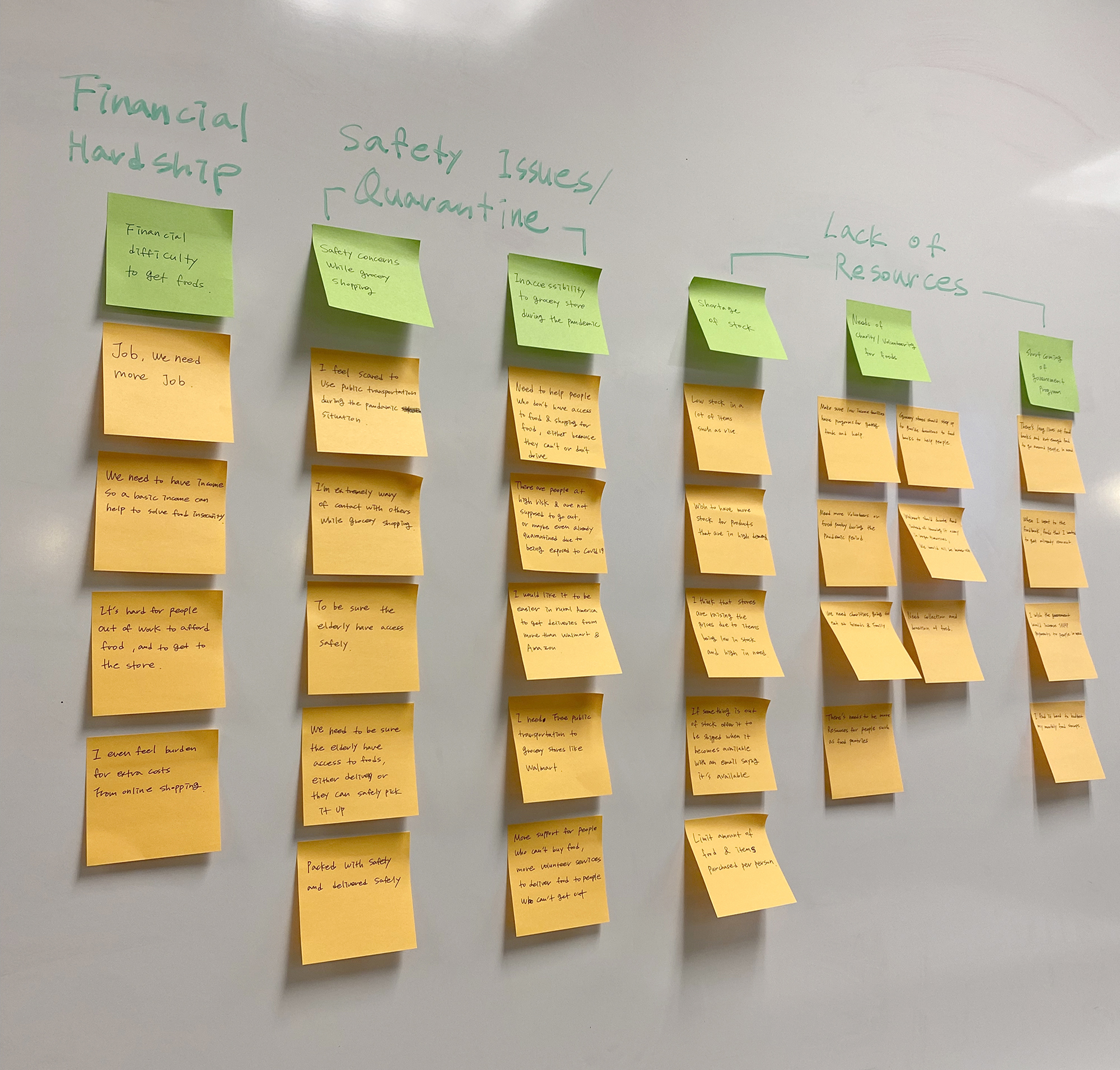
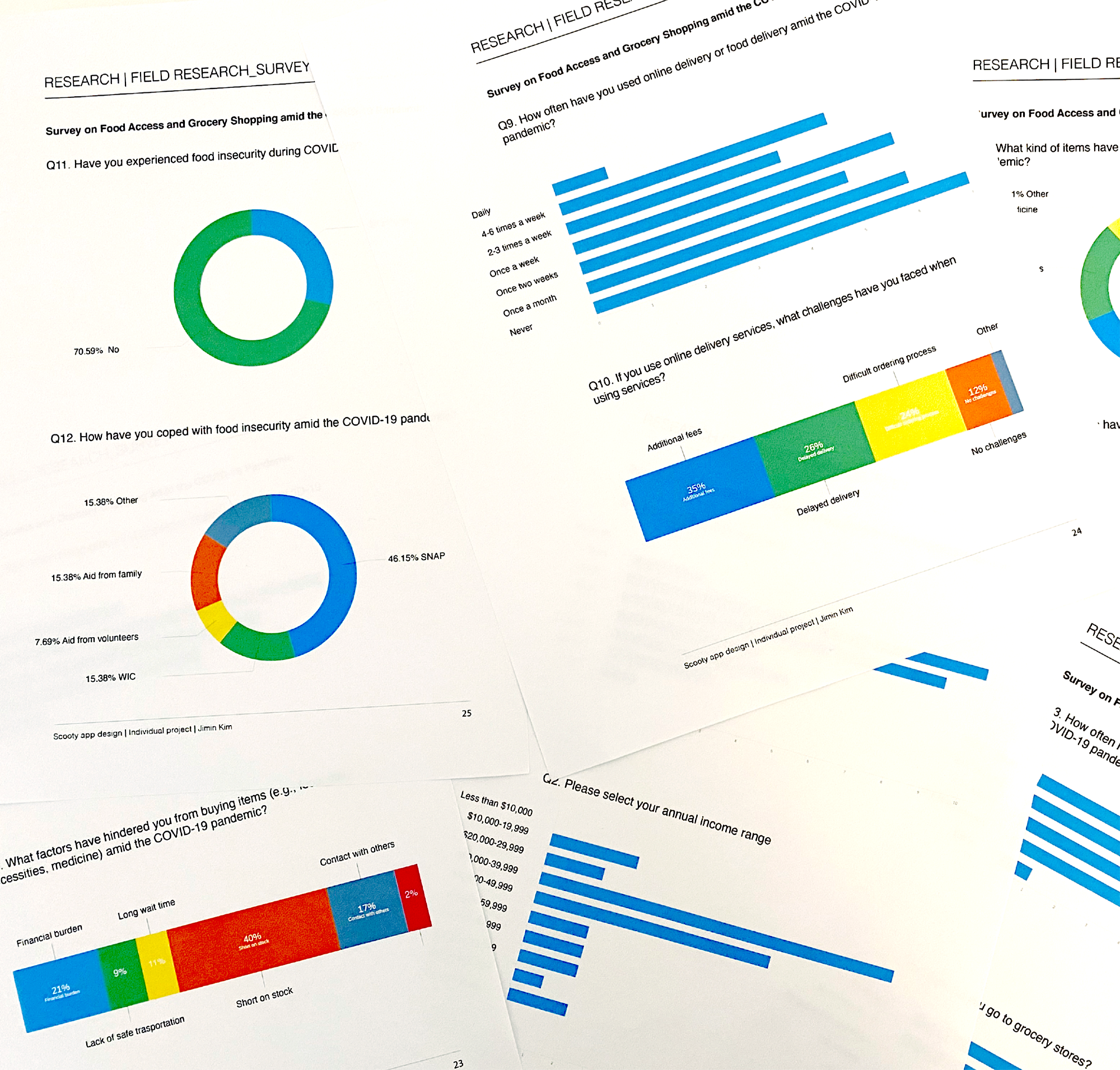
Key Findings & Insights
After analyzing both quantitative and qualitative data on food access challenges during the pandemic, we categorized the findings into three key areas:
- Financial Hardship: Difficulty affording sufficient food.
- Safety Concerns: Anxiety about potential health risks while grocery shopping.
- Lack of Resources: Limited access to necessary tools and support for acquiring food.
These three challenges have significantly restricted users' ability to grocery shop, both in-store and online, since the onset of the COVID-19 pandemic. These restrictions have made it increasingly difficult for users to secure food during this period.
2. Problem Definition
Personas
The personas, Paul Williams and Alicia Taylor, represent key target users in the context of food deserts during the COVID-19 pandemic. Paul, a 63-year-old retired male living in a rural food desert, faces mobility challenges due to a leg disability and is at high risk for COVID-19. His primary goal is to access healthy and fresh foods safely, but his pain points include health risks associated with in-store shopping and difficulty traveling long distances. Alicia, a 32-year-old single mother residing in an urban food desert, struggles with financial hardships after losing her job during the pandemic. Her goals include shopping affordably and reaching supermarkets despite limited transportation options, but she is hindered by high prices at local stores, additional costs for online shopping, and transportation barriers. Together, these personas highlight the unique challenges faced by vulnerable populations in accessing food during the pandemic.
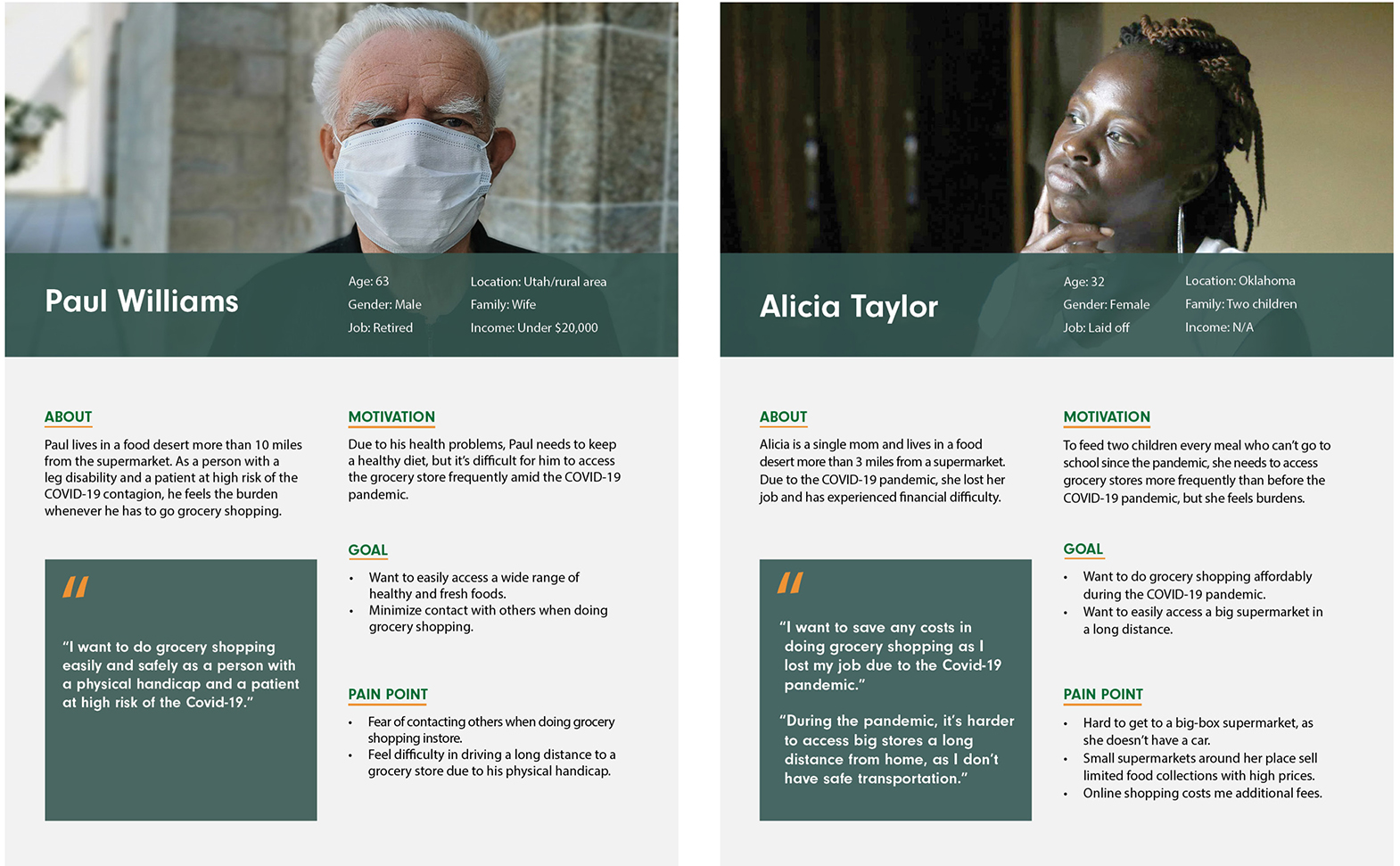
Narrowing-Down Approach by HMW Framework
The “How Might We” (HMW) framework is employed to narrow down these challenges into actionable design questions. By categorizing the issues into three key areas—financial hardship, safety concerns, and lack of resources—the framework reframes these problems into opportunities for solution development. For financial hardships, the question becomes, “HMW make grocery shopping more affordable?” For safety concerns, the focus is, “HMW make grocery shopping safer?” Lastly, for resource limitations, the question is, “HMW ensure users can reliably access groceries?” These targeted questions provide a structured approach to designing user-centered solutions, ensuring that the app addresses the most critical needs of its target audience effectively.
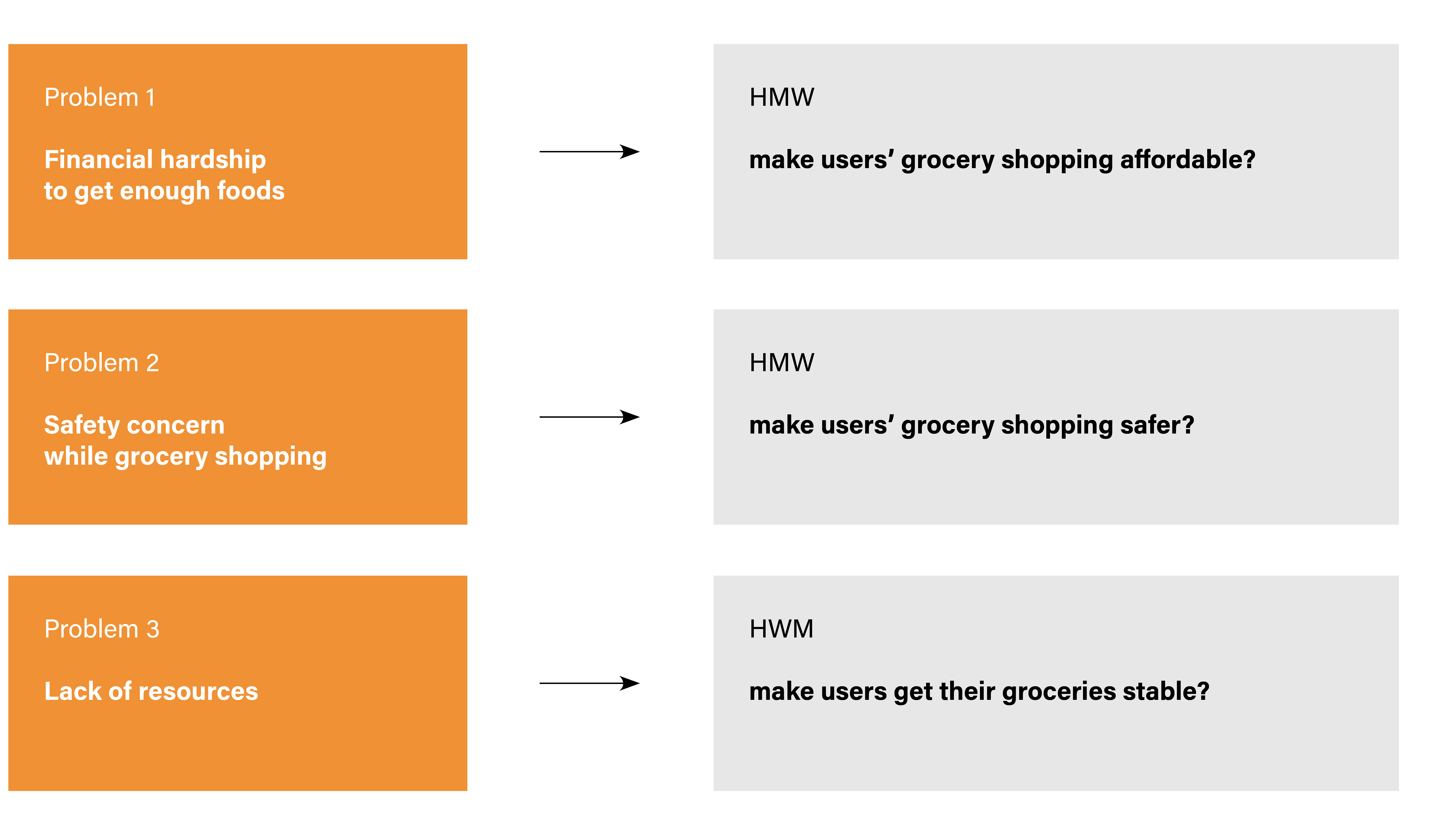
3. Concept Development
Building Ideas and Developing User Stories
With the opportunity statement as a guide, we conducted a brainstorming session using mind mapping to explore potential solutions. Among the generated ideas, we developed the concept of a voluntary grocery pick-up app. This app connects vulnerable individuals seeking safe grocery delivery with nearby volunteers already at the store. To bring this idea to life, we crafted a user story centered around micro-volunteering and visualized it through storyboards.
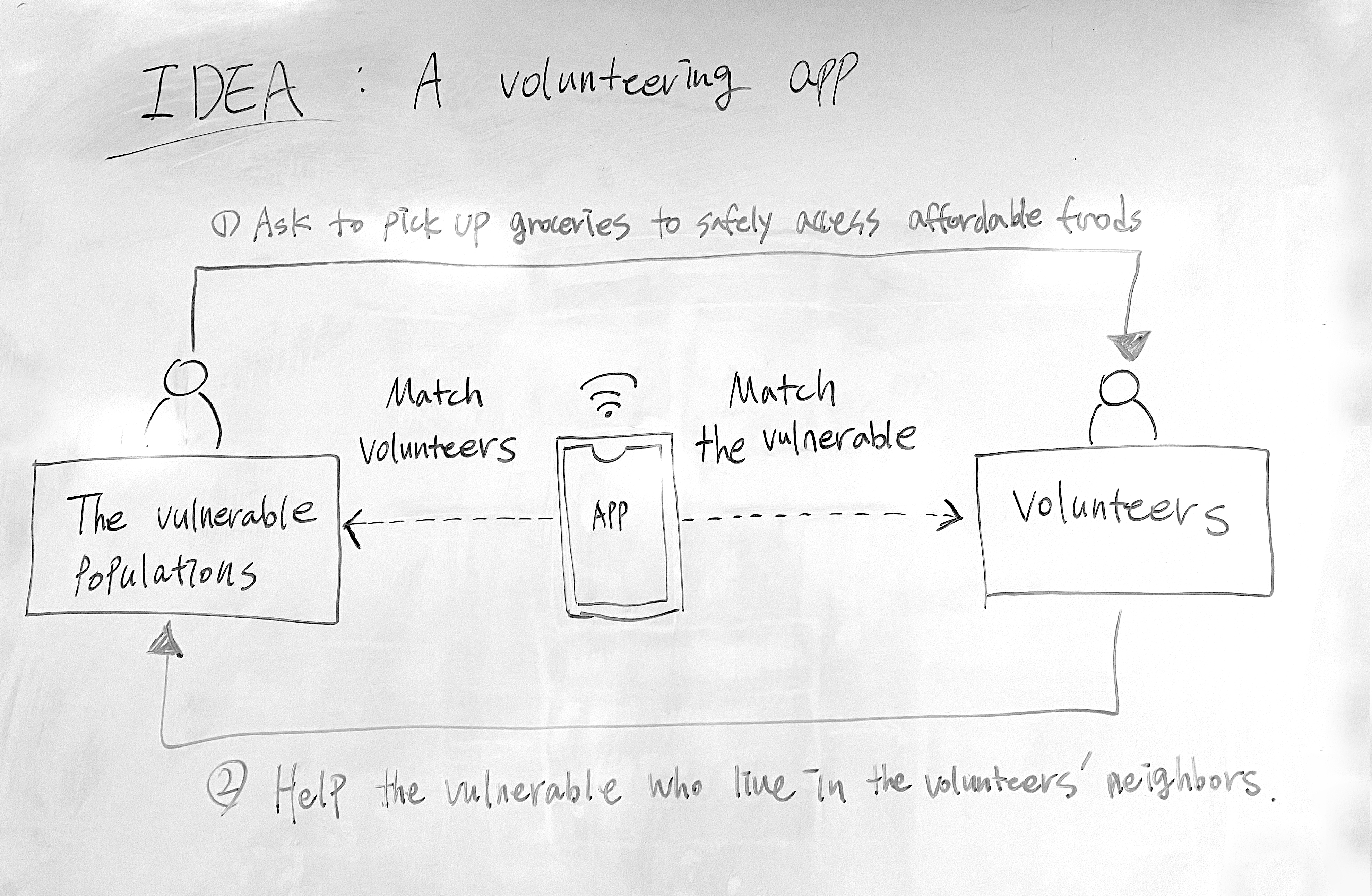

From Sketches to Wireframes
Supporting the concept further, we created initial idea sketches and wireframes.

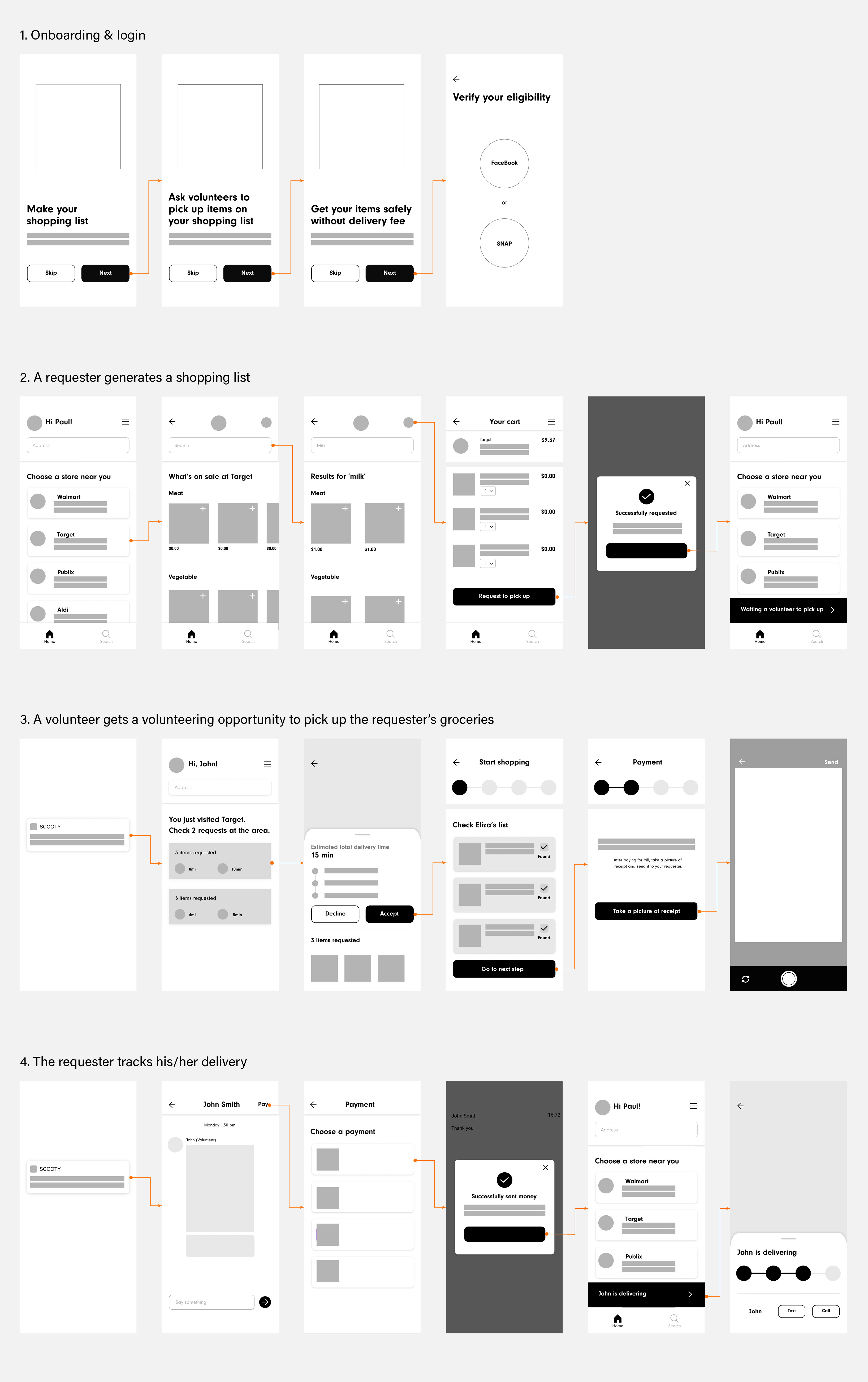
4. Solution Design
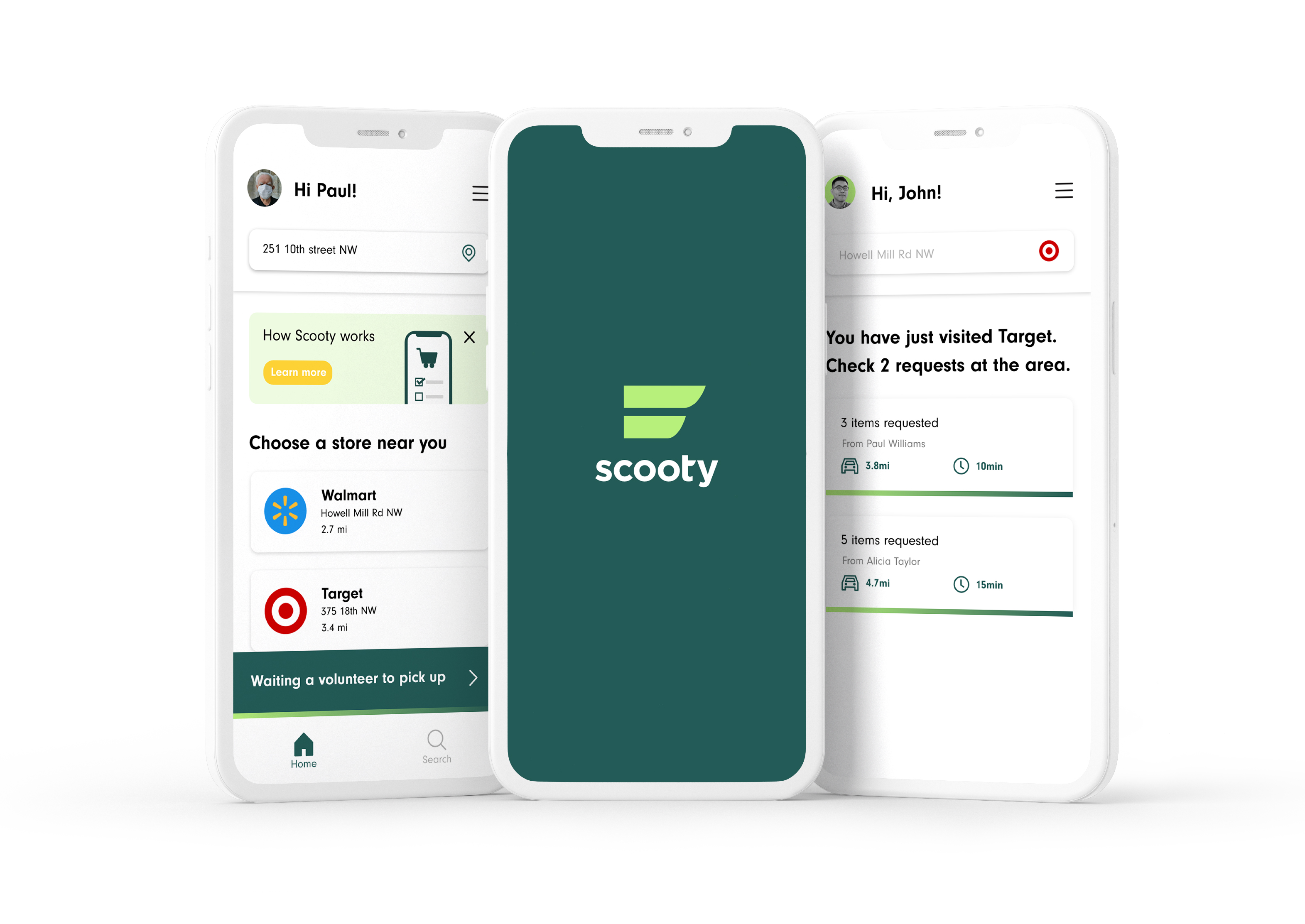
The Scooty app streamlines grocery pick-up for vulnerable populations through a micro-volunteering system. Users start by verifying their eligibility using Facebook (age 60+) or SNAP ID and creating a shopping list, selecting items and stores while accessing available discounts. Once the request is submitted, it becomes available for volunteers to accept. Volunteers already at the store receive notifications and can view requests based on proximity to their home and the requester’s location. Upon accepting a request, the volunteer shops for the items alongside their groceries and uploads a receipt for verification. The requester can then track the delivery in real-time, confirm receipt of the groceries, and complete payment securely through various options like Venmo, PayPal, or cash. Scooty ensures a safe, efficient, and collaborative solution for grocery access during times of need.
